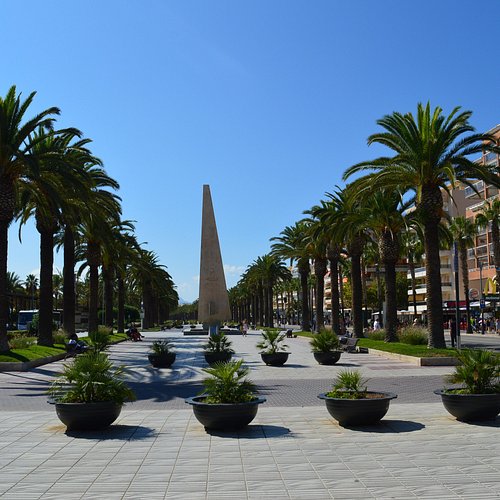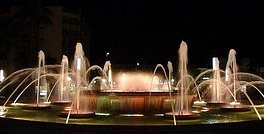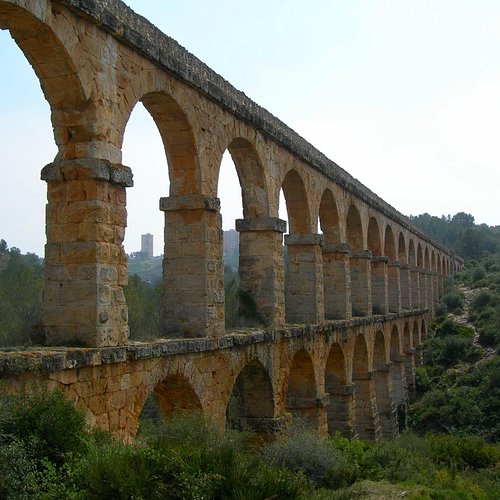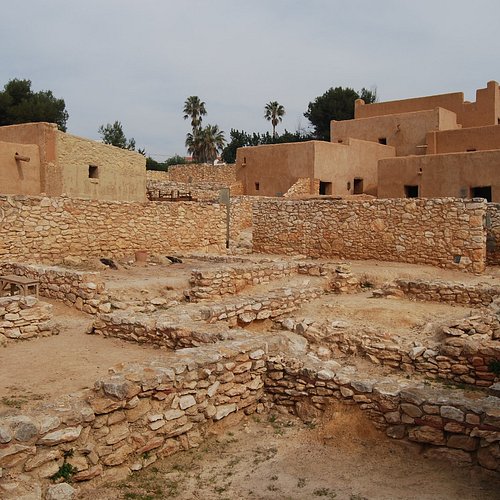The 10 Best Sights & Landmarks in Costa Dorada, Catalonia
The Costa Dorada is one of the main tourist destinations on the Mediterranean. It is a rich and varied territory, with a long coastline bathed in sunshine and an interior dotted by quiet villages and cultivated fields. The Costa Dorada is much more than sun, sea and sand. It offers its visitors a wide range of leisure activities, culture, nature and history in an ideal setting of peace and tranquillity, perfect for holidays with the whole family.
Restaurants in Costa Dorada
1. Hipica West Fork
2. Amfiteatre de Tarragona
Overall Ratings
4.5 based on 2,578 reviews
Reviewed By Vic_VDB - Tamworth, United Kingdom
The sun shone, the sea sparkled and the place stunned with its size, history and amazingly well preserved site. It’s one of the most stunning things I’ve seen and the churches that followed on this Roman site only added to the whole experience. You can buy a multi-site ticket for this and many other Roman sites for what I think is a paltry sum for and immense experience. Well worth a visit
3. Catedral Basilica Metropolitana Primada de Tarragona
Overall Ratings
4.5 based on 1,605 reviews
The cathedral is dedicated to St Thecla and is erected at the top of the acropolis or hill of the ancient city. Its construction began in the year 1171 and it was consecrated on 4 July 1331. Its foundations and later architectural development are located on the remains of an ancient Roman construction begun in the second quarter of the 1st century bc. and completed at the beginning of the Vespasian Empire (69-79 AD). The Cathedral is gothic in style. Its floor plan is in the form of a Latin cross, with three naves each with their own apses and transept. The head is of Romanesque tradition with half-point arches supporting the extension of the stone wall and pilasters following the new constructive techniques of the Gothic movement.
Reviewed By VadimM67 - Murmansk, Russia
The Cathedral of Tarragona faces the visitors with its facade. You can't get around it and photograph it from different angles like Sagrada Familia or Notre-Dame de Paris. Adjacent houses and walls prevent you from seeing the result of a century and a half of construction. The best way to see the entire Cathedral is to go to Torrellas de Llobregat in the Park Catalunya in miniature. The fact that the Cathedral is located in urban development suggests that it was not built on an empty place. Harshly denouncing paganism, the Christians nevertheless quietly parasitized on his achievements. Originally there was a Roman temple dedicated to Octavian Augustus. Converted to Christianity, the Visigoths built the first Church here in the IV century AD. the Arabs also didn`t invent anything and placed a mosque here. By the way, the Moorish set ceilings were preserved in the Cathedral. It is not known exactly when the Cathedral appeared in its current form. The first mention dates back to the XII century. The facade of the Cathedral is Romano-Gothic. The most interesting thing on the facade, in addition to the traditional Gothic rose, is the figures of the apostles (XIV century). By the way, the rose appeared later, because the Cathedral was originally built as a fortress, so the Windows resembled loopholes and were located high. There was little hope for the power of the word of Christ; the thick walls and powerful buttresses were much more significant. I`ve seen similar fortress churches in Montpellier and Toulouse, which once again speaks of the cultural and historical community of Catalonia and French Languedoc. The Cathedral was completed in 1350. However, this doesn`t mean that the interior is Gothic. Renaissance and Baroque chapels were added to the Cathedral in the XIV-XVIII centuries. The main masterpiece inside is a 15th-century altar by Pere Johan, whose bas-reliefs depict the life of Saint Thecla, patroness of Tarragona. In addition to the altar of 5 € (ticket price) , you can see the sarcophagus of Juan of Aragon, wooden pews of the choir of the XIV century, Baroque chapels with intricate stucco, a small Museum and a cloister. However, I passed until 10 am for free, but the Museum and cloister didn`t get there. The Cathedral was definitely worth a visit. The modest size of the facade is disorienting for tourists. The Cathedral is similar to the houses in Amsterdam (there because of taxes): the narrow facade doesn`t suggest how long the house is in reality. So it is here.
4. Paseo Maritimo
5. Avenida Jaume I
Overall Ratings
4.5 based on 697 reviews
Reviewed By gazwcave - Douglas, United Kingdom
I have never seen so many palm trees in my life than what they offer in Salou. This is a lovely promenade, palm tree lined one after another with makes it a lovely walk, day or night. Plenty of eateries and bars just across the street that lines alongside. I highly reccomend
6. Illuminated Fountain
Overall Ratings
4.5 based on 3,842 reviews
Reviewed By C7442MTchrish - Chorley, United Kingdom
Visited on a walk around Salou town in the evening. The area around the beach has an excellent promenade area with fountains, sculptures and gardens; shops, arcades and restaurants are on the opposite side. The fountain is usually on for about 20 minutes and whilst we were there, three varying types of music played as the water "danced" in time to the music. The whole spectacle is free and always well attended. A nice spectacle to take anyone of any age to
7. Circ Roma
Overall Ratings
4.5 based on 854 reviews
Reviewed By pnetster
This place costs 3.30 per adult and it is money well spent, information in English french and Spanish really gives you a great insight. Steps up to the roof give a great view and the recreation of roman chariot racing was fab. The site is much larger than the building you enter so get ready to walk!
8. Pont del Diable
Overall Ratings
4.5 based on 1,646 reviews
Reviewed By VadimM67 - Murmansk, Russia
The Roman aqueduct in Tarragona was my fifth aqueduct after the Valens in Istanbul, the aqueduct in Segovia, the Aqua Appia in Rome, and the famous Pont du Gard near Nimes. The aqueduct of Tarragona or the devil's bridge certainly did not get on the 5-Euro bill like the Pont du Gard, but it is the most picturesque I have seen, even if not the largest. Getting to the Devil's bridge is easy. You need to take the 5 or 85 bus on the ring at the bus station. The aqueduct Park is just 5 km from Tarragona. After getting off at the bus stop of the same name, go right for another 500 meters. And here it is: Wow! There are two things I admire most about Roman aqueducts. The ability of engineers to calculate the slope for many kilometers and the ability of builders to accurately perform it. This is the art of leading water (from Latin: aqua — water and ducere-lead).Roman engineers could determine the slope with an accuracy of 0.1 degrees — that is, 1 m of slope per 1 km of aqueduct. It is not easy to implement this in practice, so to avoid changing the angle of inclination, special reservoirs were created that accumulate and equalize water. The water trough is preserved in the aqueduct here. You can see it if you climb to the top. In fact, it was not necessary to build an aqueduct of this size. It would be possible to lay siphon pipes to the bottom of the gorge, following its profile and then lift it up to a height just below the original level. This is called a hydraulic gradient. Why did the Romans prefer to build giant aqueducts? The size is disorienting. We think if bigger and more massive means more expensive. However, pipes (lead pipes) have cost the Romans more expensive than bridges. Masonry was cheap, due to the cheapness of stone, brick, and mortar. Only if the depth of the gorges was great, the Romans stretched pipes to the bottom,and then up. In our case, the aqueduct is 27 meters high. The water was taken from the Rourell area, 92 metres above sea level, and carried more than ten kilometres The grandiose structure could not but cause mystification in the middle ages, when the Visigoths, and then the Spaniards lost the ability to build such structures. They named the aqueduct the devil's bridge, linking it with the legend that the devil will take the soul of the person who enters the bridge first. Local residents let a donkey on the bridge first... The donkey is not Faust, its soul is not interesting. Now you can walk on the bridge as you like. This is probably the most accessible aqueduct I've ever seen.
9. Murallas de Tarragona
Overall Ratings
4.5 based on 625 reviews
Reviewed By Timothy5 - Hull, United States
It is great to visit a place like this off season as you can take your time reading the signs and enjoy looking out at the views. This place is a wonderful experience. There are a lot more Roman ruins than we expected. We went here at night and then came back during the day. It was on the pass we bought for various historic sites in Tarragona.
10. Ciudadela Iberica de Calafell
Overall Ratings
4.5 based on 116 reviews
The Iberian Citadel of Calafell is one of the most remarkable archaeological sites of the Iberian times (6th to 2nd centuries BC) in our country due to its singularity. Its experimental reconstruction "in situ" makes the Citadel an appropriate place for all range of public in order to know how the Cossetan Iberians lived more than 2000 years ago.










